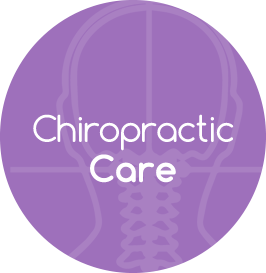Chiropractic and Rheumatoid Arthritis
 The 28-year-old female reported on in the study was suffering from rheumatoid arthritis, peripheral joint pain, and swelling. The pain became more noticeable after a fall from a fence as it affected one joint at a time from the shoulder and hands to the knees and feet. She also had complaints of headaches, dizziness, fatigue, toe pain, lower back stiffness, digestive issues, chest pain, fainting, and double vision. She was taking medication several times a day to manage the pain.
The 28-year-old female reported on in the study was suffering from rheumatoid arthritis, peripheral joint pain, and swelling. The pain became more noticeable after a fall from a fence as it affected one joint at a time from the shoulder and hands to the knees and feet. She also had complaints of headaches, dizziness, fatigue, toe pain, lower back stiffness, digestive issues, chest pain, fainting, and double vision. She was taking medication several times a day to manage the pain.
The chiropractor examined her and found structural shifts in her neck, midback, and low back. Decreased range of motion and muscle spasms were noted in her neck, midback, and low back. X-rays confirmed these findings. These structural shifts can lead to obstruction of the nerves and it is this obstruction, called vertebral subluxations, that chiropractors correct.
Following chiropractic care, she began to experience a better quality of life. She did not require medication for pain management and her symptoms decreased dramatically. Her range of motion improved also.
The study’s author called for additional research to investigate the clinical implications of chiropractic in this population.
Reference: Improvement Following Subluxation-Based Corrective Chiropractic Care in a 28-Year-Old Female Diagnosed with Rheumatoid Arthritis: A Case Study & Review of the Literature. Dale Brown DC & Joshua Korten DC. Annals of Vertebral Subluxation Research ~ Volume, 2023.
Rheumatoid Arthritis – FACTS
Rheumatoid Arthritis, RA, is an autoimmune and inflammatory disease where the immune system attacks the healthy cells by mistake which causes inflammation in the form of painful swelling in the affected joints. It most often attacks the joints in the hand, wrists, and knees. Rheumatoid Arthritis can also affect the eyes, heart, kidneys, and lungs.
The cause of RA is unknown but age, sex, genetics, smoking, life exposures, and obesity are factors that may increase risk of developing it. Symptoms of RA include pain/stiffness in one or more joints, tenderness and swelling in the joint, weight loss, fever, fatigue, and weakness.
RA is diagnosed by physical examination, X-rays, and lab tests. Other imaging that may be used is MRI and ultrasound. X-rays are used to track progression of the disease and MRI and ultrasound portrays the degree of severity of the disease. The goal of treatment is to suppress or control inflammation. Treatment involves medication that slows disease and joint deformity and surgery if medication fails. Other therapies often focus on improving mobility and flexibility.
Chiropractic adjustments reducing the structural shifts that obstruct nerves associated with vertebral subluxation may help those suffering with RA. It is this obstruction that may cause a cascade of neuroendocrine events that lead to the triggering of the autoimmune response. The theory is that once those structural shifts are corrected the body is better able to balance its function.
The nervous system controls and coordinates all functions of the body and structural shifts in the spine can occur that obstruct the nerves and interfere with their function. By removing the structural shifts, chiropractic improves nerve supply and function.


